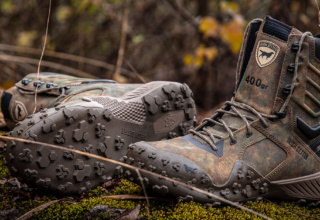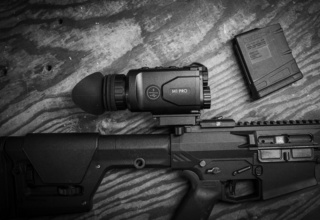I’m just going to take a wild guess. I’m guessing that 80 percent of firearm owners (maybe even more) do not have a basic understanding of the materials needed to properly maintain their long guns and hand guns. Of the remaining 20 percent, there might be ten percent of gun owners who know the difference between cleaning, lubricating, and protecting and the solutions needed to achieve these critical objectives. The remaining 10 percent (probably less) may be the only ones who practice gun maintenance using all the proper solutions.
Sounds like a harsh indictment of the firearm enthusiast community in general, but from what I’ve seen over the years, I’ll stand by those numbers until proven wrong.
 You can’t totally fault the individual gun owners for this—especially those who are relatively new to the firearm community. Those who have never had a knowledgeable mentor or took it upon themselves to take a deep dive into the whys and wherefores of firearm maintenance are simply unaware of the nuances involved with gun metal cleaning, lubricating, and protecting.
You can’t totally fault the individual gun owners for this—especially those who are relatively new to the firearm community. Those who have never had a knowledgeable mentor or took it upon themselves to take a deep dive into the whys and wherefores of firearm maintenance are simply unaware of the nuances involved with gun metal cleaning, lubricating, and protecting.
Of course, the gun care product manufacturers don’t always help matters. Look at the shelves of any well-stocked sporting goods store and consider the many gun care products available. Can you tell from reading the labels how each product does what it claims to do or what the products are made of, so you know if they are beneficial or harmful or fulfilling the needs you have?
In most cases, the answers are, “No,” and, “No.”
Take CLP, for instance. The acronym stands for Cleaning/Lubricant/Protectant (or “cleans, lubes, protects”). CLP was developed to be a one-solution, do-it-all product for short-term, in-the-field firearm maintenance for military small arms (MIL-PRF-63460).
There are many CLP solutions on the market today, many of which claim performance outside of the core competencies of cleaning, lubricating, and protecting. For example, some claim to incorporate a “dust-inhibiting” function while others boast the ability to “attack rust.”
Well…how do they do that, and can these special formulations be harmful to a firearm?
Good questions. Maybe they do what they say and maybe they don’t. It’s difficult to tell because there are so many variables involved. That said, CLP formulas DO NOT adhere to gun care best practices for normal-condition cleaning, lubricating, or protecting of a firearm. To better understand why this is so, it is necessary to break down each of these maintenance categories.
CLEANING

When cleaning a firearm, the goal is to remove all non-base metal substances (except for any applied finishes). This includes carbon fouling, dirt and debris, oil and grease, as well as lead and copper residue, and it requires a dedicated solvent to make it happen. Of all the solvents out there, Hoppe’s #9 is the recognized standard among gunsmiths, armorers, and knowledgeable firearm practitioners. It is the ideal solution to remove the contaminants from rifle bores, action, bolts, bolt carrier groups, trigger assemblies, and anywhere fouling, contaminated lubricants, and unwanted residues build up in a firearm.
Hoppe’s #9, like any solvent, breaks up, renders inert, and allows fouling substances to be lifted and removed from contaminated gun metal…including grease and oils. How then, can a CLP effectively clean a firearm (dissolving and removing contaminants) while simultaneously lubricating the metal? It can’t. And that is why proper cleaning must start and end with a solvent like Hoppe’s #9.
LUBRICATING
 The sole purpose of firearm lubrication is to reduce friction between moving parts. Lubrication lowers the friction coefficient between moving metal-on-metal components to provide smooth operation and to reduce wear. Firearms typically use one or two types of lubricant—oil or grease—as recommended by the firearm manufacturer.
The sole purpose of firearm lubrication is to reduce friction between moving parts. Lubrication lowers the friction coefficient between moving metal-on-metal components to provide smooth operation and to reduce wear. Firearms typically use one or two types of lubricant—oil or grease—as recommended by the firearm manufacturer.
Oil has a lower viscosity than grease, meaning it flows easily and offers little to no impedance on moving parts. Oil is often the recommended lubricant for use between components exhibiting close operational tolerances, such as some fine trigger assemblies, bolt internals, slides, and firing pins. A good example of this type of lubricant would be Hoppe’s Lubricating Oil or even food-grade mineral oil (which is what many professional gunsmiths use).
Grease has a higher viscosity than oil, which causes it to stick to metal parts longer than oil and thus provides a somewhat self-dispersing lubrication function. It is typically used on metal-to-metal components that have low operational tolerances, such as bolt carriers, guide rod rails, triggers, and the like. Grease is commonly used in firearm platforms designed for high-volume discharges and that produce high friction temperatures. An example of this type of grease is Hoppe’s Black Grease, which comes in a syringe for precise, no-mess application. As you can see, firearms have certain lubrication needs depending on their design and function. A catch-all lubricant, such as the lubricating component of CLP, cannot effectively (or at least to manufacturer design specifications) meet all the operational needs of most firearms. For that, you need the correct lubricant applied to the correct locations as directed by the firearm manufacturer.
As you can see, firearms have certain lubrication needs depending on their design and function. A catch-all lubricant, such as the lubricating component of CLP, cannot effectively (or at least to manufacturer design specifications) meet all the operational needs of most firearms. For that, you need the correct lubricant applied to the correct locations as directed by the firearm manufacturer.
PROTECTING
When we talk of firearm protection, the discussion is solely about preventing rust and corrosion from attacking gun metal. Guns should always have a protective coating on their metal parts because even brief exposure of raw, untreated metal to the atmosphere can initiate the rusting process. This is the reason firearms are treated with bluing, phosphate coating, paint, and newer coatings such as Cerakote.
The problem with using most CLP formulations as a protectant lies in their claims of being able to attack rust. Well, on blued gun metal, the bluing is rust. So, do you want to put a rust-fighting coating an your blued (controlled rusted) firearm year after year? Absolutely not, otherwise you will eventually degrade the blued finish to the point that it no longer can provide the rust-preventative performance it was intended to deliver.
 For daily and short-term (less than 30 days) protection, a pure petroleum-based product is ideal. Our preference is a light, food-grade mineral oil simply because it is inexpensive, available everywhere, and flat-out works.
For daily and short-term (less than 30 days) protection, a pure petroleum-based product is ideal. Our preference is a light, food-grade mineral oil simply because it is inexpensive, available everywhere, and flat-out works.
For long-term storage, however, you need something that is a bit more robust. For that, there is nothing better than Rig Universal Gun Grease. This is an extremely sticky grease that stays put when applied to gun metal and forms an impenetrable shield to guard against moisture and to prevent rust from taking hold of your firearm. The important thing to remember when using Rig Grease, though, is to thoroughly remove it prior to using the firearm. This IS NOT a lubricant (even though it feels like it is), so it must be removed and replaced with the proper grease or oil before shooting. This is especially important if you coat your bore with Rigs. Because Rigs is highly viscous, shooting a firearm with even a light coating of Rigs left in the bore can cause excessive chamber pressure, which could lead to a catastrophic and potentially harmful firearm failure.
Before shooting a firearm that has been preserved with Rigs Grease, thoroughly remove the grease with a jag and cotton patches, then run a patch with light gun oil or mineral oil through the bore as you would during normal cleaning operations.
A WORD ABOUT WD-40
We would be remiss if we didn’t mention the ever-popular WD-40 since it is a go-to protectant for many firearm owners.
As a lubricant, it is not a good alternative to a pure petroleum-based oil and it is no substitute where grease is required. As a protectant, it contains an assortment of chemicals that have been claimed to cause damage to metal and wood finishes, so that’s a no-go in our book.
What WD-40 does excel at in terms of firearms is removing water and moisture from between tight metal components and lifting moisture out of porous Parkerized or manganese phosphate finishes. If your firearm has been exposed to rain or it has taken an accidental dunk in the water, a thorough spraying-down with WD-40 is a good way to get the water out before rust can set in. After that, clean the firearm as you normally would and leave off with a coat of lubricating gun oil or light mineral oil.
As you can see, the one-and-done CLP may be convenient for immediate firearm maintenance needs when you are in the bush (on the battlefield or spike camp hunting deep in the wilderness), but for proper gun care, it’s always best to approach cleaning, lubricating, and protecting with the correct product for the job.












